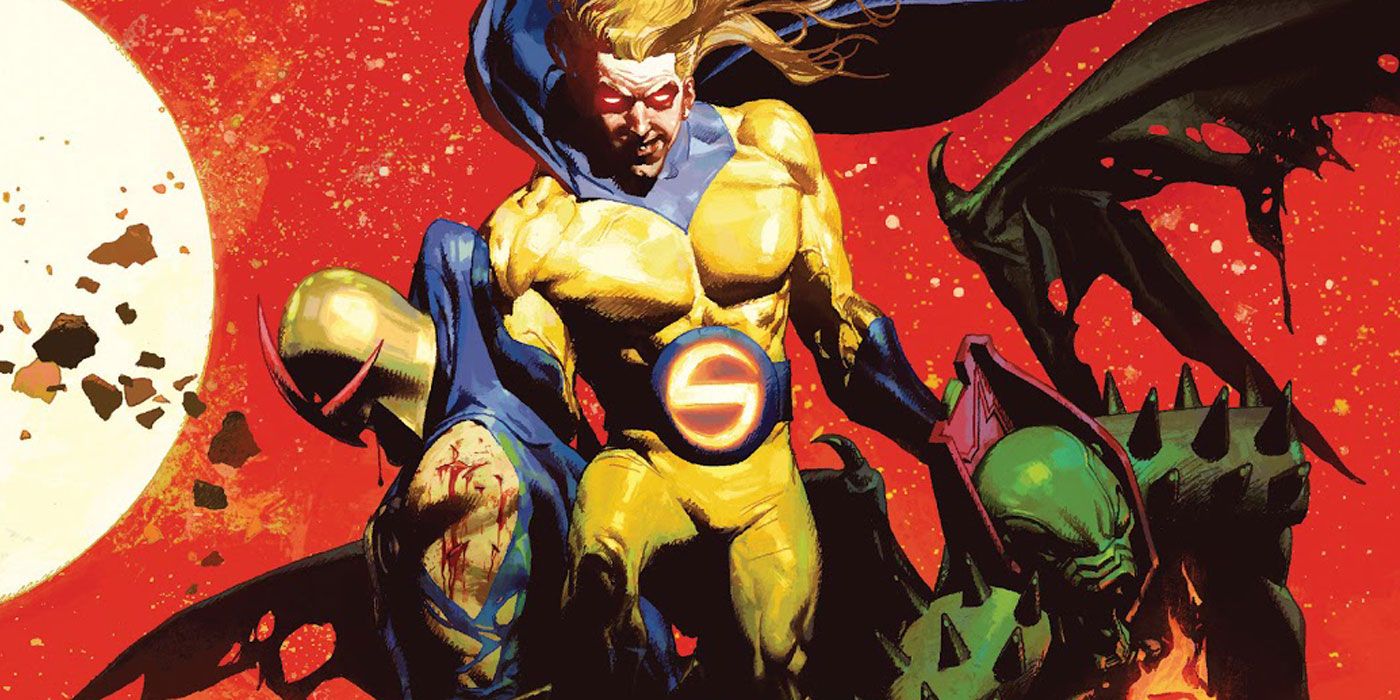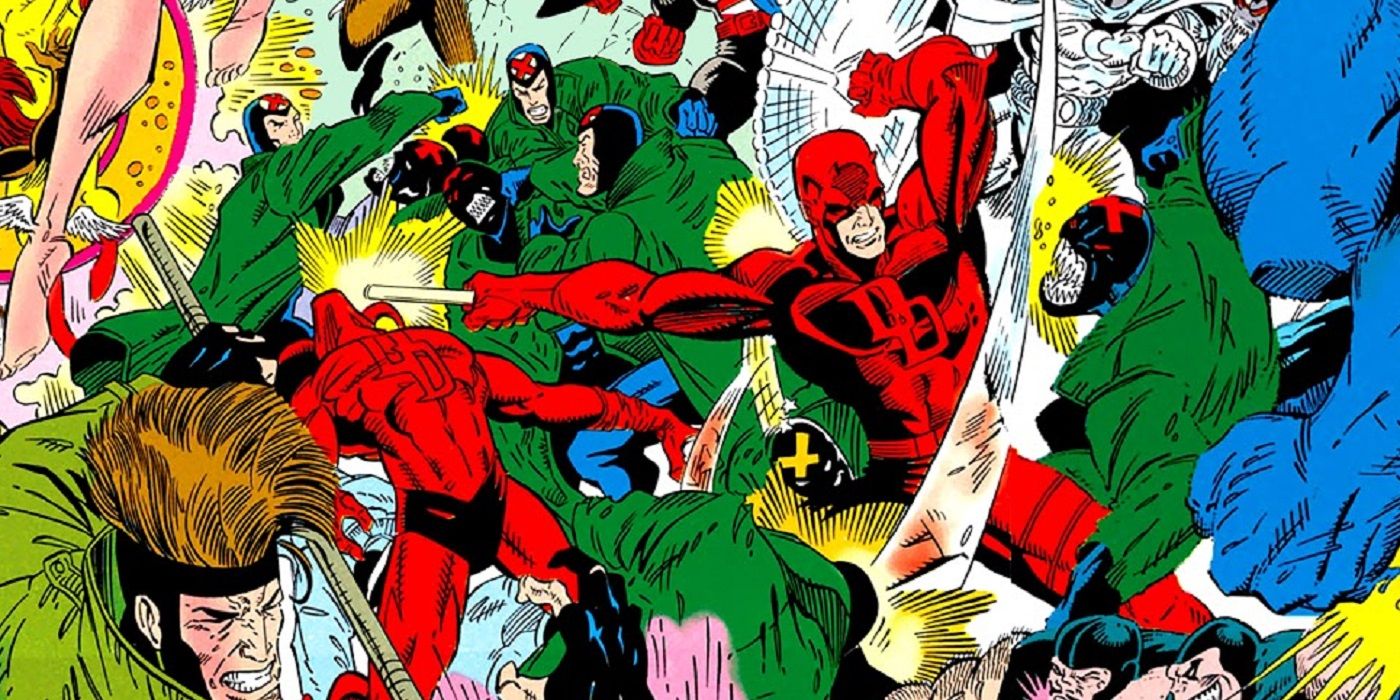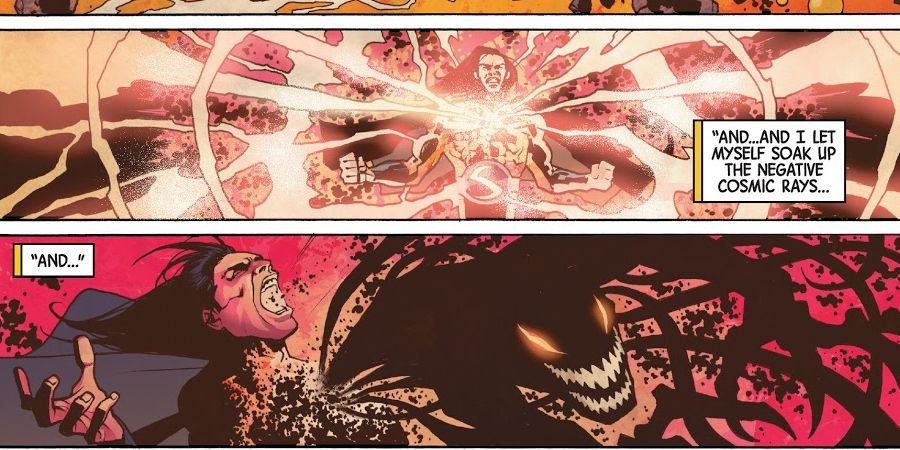Marvel's Annihilation: Scourge storyline that just wrapped up this week is a return to the cosmic events of the late '00s, this time with a new alien menace to threaten the extinction of the universe. However, although the event has the same series title as Annihilation and Annihilation: Conquest, it actually has more in common with an even older cosmic event, The Infinity War.
No, not that Infinity War, which is misleadingly based on the precursor to the comic book series, The Infinity Gauntlet. The comic book version of The Infinity War follows an entirely different plot than the film that shares its name, a story that Annihilation: Scourge seems to have followed closely. In fact, the two plots are so strongly related that, in a way, Annihilation: Scourge neatly works as a sort of spiritual successor.
The Infinity War, first published in 1992 and written by Marvel space opera extraordinaire, Jim Starlin, follows a range of different characters in a sweeping, overarching tale that crossed over into several other series. It continues the events of The Infinity Gauntlet, tracing what happened to the Gauntlet after space hero Adam Warlock formed the Infinity Watch to protect the Infinity Gems from falling into the wrong hands. The stones once again threaten the universe, as this time Adam Warlock's evil half, known as the Magus, seeks to wield their immense power.
Reading The Infinity War in its entirety reveals a multitude of similarities with Annihilation: Scourge, but even a cursory glance at the main series proves the influence of Jim Starlin's sweeping cosmic epic. For starters, both stories involve evil, deformed superhero doppelgangers that hail from alternate universes and threaten to take over the mainstream Marvel universe. In the Annihilation event, these monsters come from the Cancerverse, a nightmarish dimension in which life grows uncontrolled and imbalanced. All living beings are connected together through the Many-Angled Ones, a mysterious entity that seeks to eliminate free will. The Cancerverse includes hideously mutated versions of Marvel's heroes that adapt names like the Revengers and the Fhtagn Four, and which seek to convert lifeforms to the hive mind of the Scourge.
Likewise, The Infinity War also pits Marvel's characters against malevolent interdimensional clones. In this instance, they are creations of the Magus, who seeks to use the Infinity Gauntlet to replace the mainstream universe with his own warped vision. The Magus' doppelgangers, much like the Scourge, attempt to convert life to the will of a destructive force. They even use the same method of converting people, wrapping their enemies in tentacles to consume them.
Visually, the Scourge and the Magus' doppelgangers both have sharp teeth and menacing, glowing eyes. Sue Storm's evil twin, in particular, is noteworthy, as in the two instances she manifests as Malice, her once morally corrupt, mind-controlled self. This plot device serves to raise the stakes by forcing the protagonists to face mirror copies of themselves who have all their power with none of their morality holding them back from unleashing deadly force.
To be fair, these aren't the only comic book storylines involving evil twins from an alternate world. It's always entertaining to hypothesize what superheroes would be like if they fought on the side of injustice. In addition, the simplicity of the premise allows for repetition in multiple arcs and events. Currently, the heroes of DC comics are also dealing with their own doppelganger issues in the form of twisted villains from the Dark Multiverse, such as the now popular Batman Who Laughs. However, a closer look at The Infinity War and Annihilation: Scourge unveils more than just this element in common.
In both series, the doppelganger armies are unleashed and controlled by the evil halves of powerful heroes connected to the central events. Annihilation: Scourge reintroduces the Void as the main antagonist, as well as the Sentry, two halves of the same cosmic entity that possessed earthling, Robert Reynolds. Reed Richards indirectly sparked the invasion of the Scourge when he managed to separate Reynolds from the Void, who freely travels to the Cancerverse to wreak chaos and destruction on the multiverse. Likewise, in The Infinity War, Adam Warlock, who gained the Infinity Gauntlet after wresting it from Thanos, consciously separates the good and evil sides of his soul in order to responsibly become a perfectly logical being in control of the most powerful tool in the galaxy. However, Adam's evil half manifests in the form of the Magus and creates an inverse dimension to birth his minions.
These events also lead to the temporary re-aligning of famous villains. The Scourge exits the Cancerverse through a rift in the Negative Zone, the antimatter universe where the bug king Annihilus reigns. The first Annihilation event saw Annihilus as the primary antagonist, who sought to conquer the positive matter universe with his insect army. However, he falls to the mercy of the Scourge, fleeing the Negative Zone to seek help from Nova and any other heroes that can potentially hold back the invading tentacled zombies.
Thanos, another major villain who was the center of conflict in The Infinity Gauntlet, serves as one of the protagonists of the story's sequel. Now realizing that the destruction of all reality means his own inevitable extinction, the Mad Titan works together with Adam Warlock to preserve the universe they live in.
Thus, in Annihilation: Scourge and The Infinity War alike, the main antagonist is the dark half of powerful beings who must now deal with the consequences of physically removing evil manifestations from themselves. These perverse copies use evil versions of superheroes from other dimensions unleash violence and attempt to convert other universes to their control. Now, faced with an immense multiversal threat, heroes and villains are forced to team up in order to take down this looming threat. The similarities between the two events reveal the longstanding influence of Marvel's cosmic legacy.



